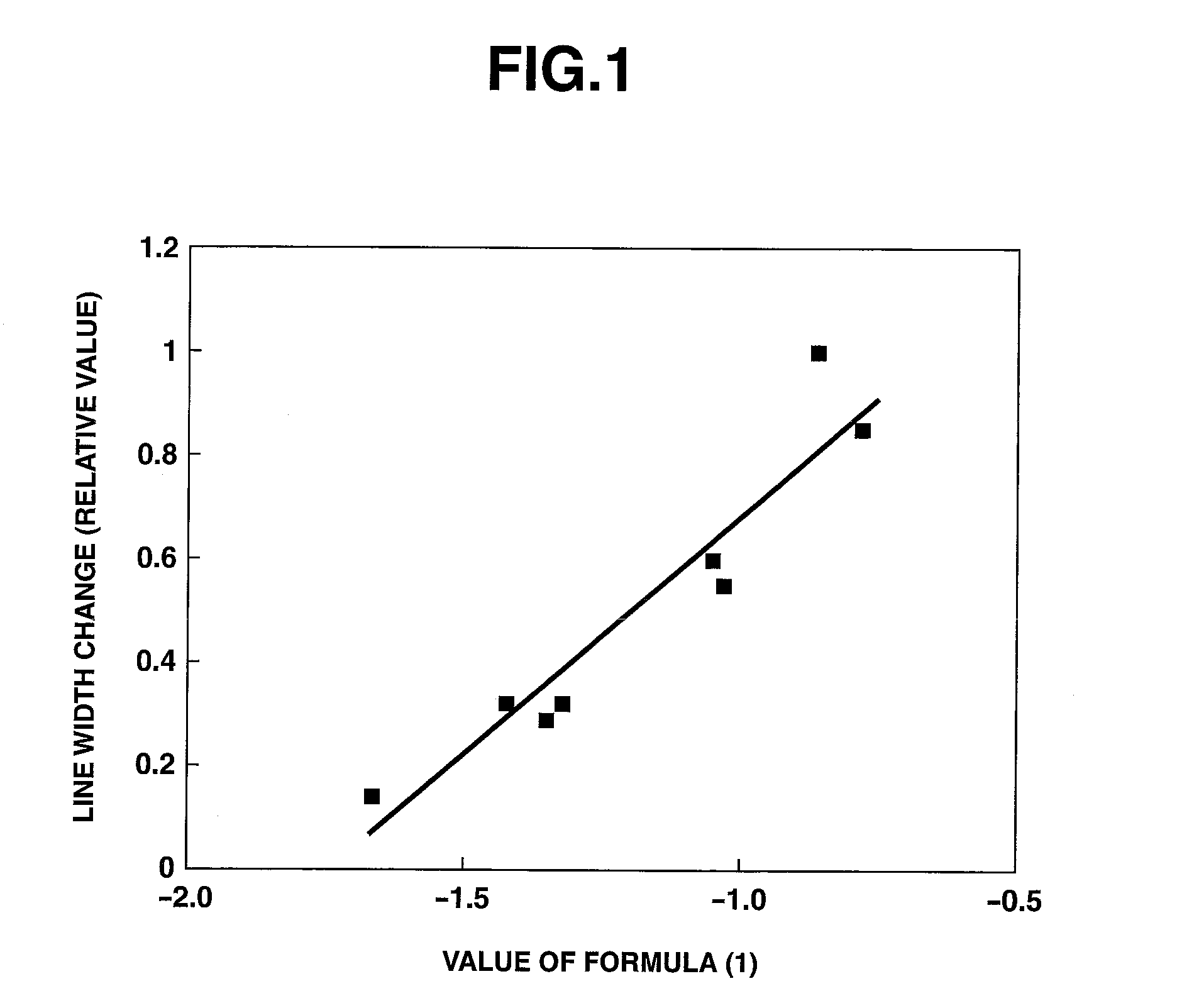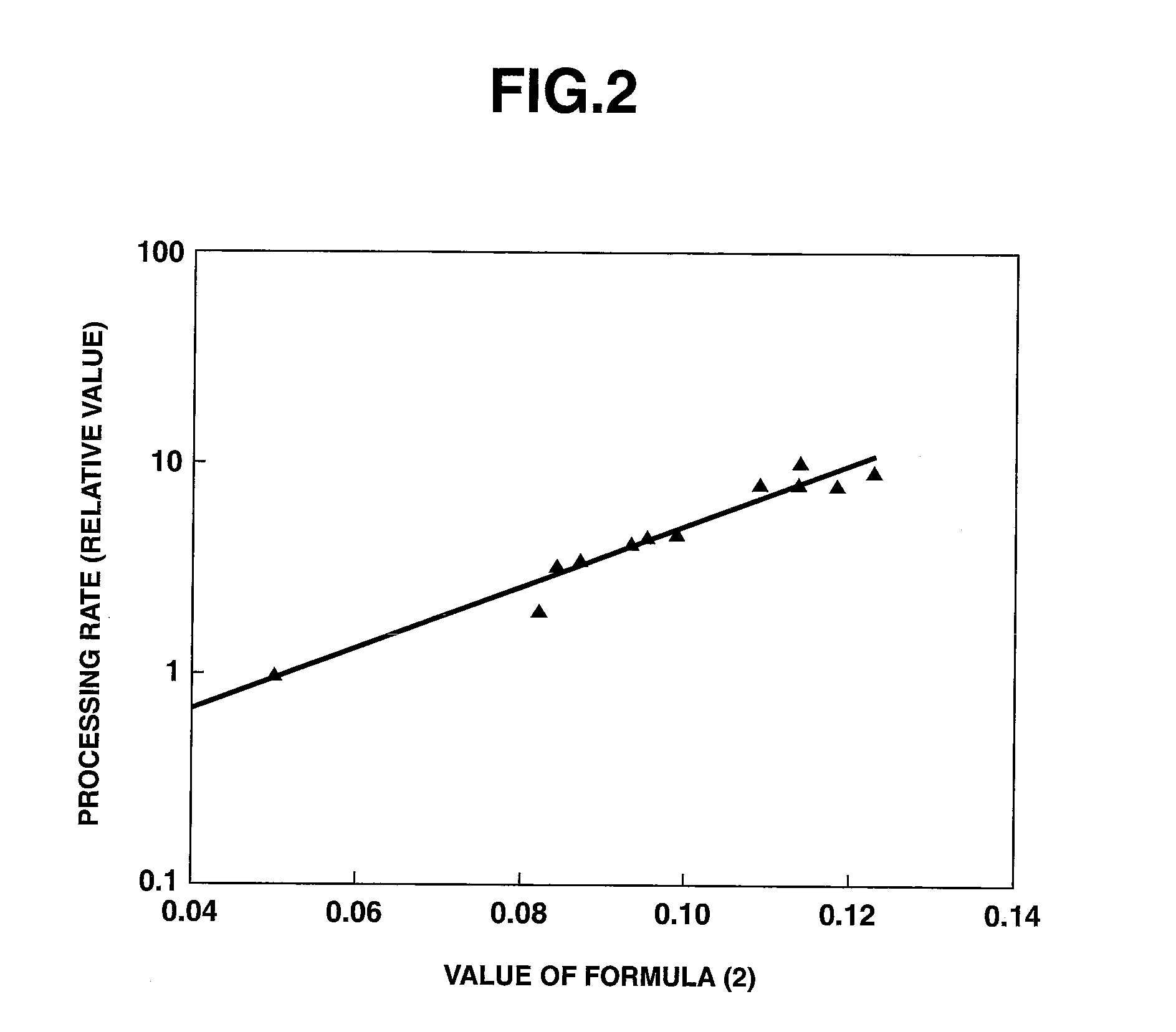Light pattern exposure method, photomask, and photomask blank
a light pattern and exposure method technology, applied in the field of light pattern exposure, can solve the problems of damage to the mask, damage to the photomask, and damage to the other side of the haze, and achieve the effect of inhibiting the degradation of pattern size variation and sufficient etching selectivity ratio
- Summary
- Abstract
- Description
- Claims
- Application Information
AI Technical Summary
Benefits of technology
Problems solved by technology
Method used
Image
Examples
examples
[0073]Experiments are given below for further illustrating the invention although the invention is not limited thereto.
Experiments 1 to 9
[0074]A DC sputtering system was loaded with two targets, a MoSi2 target and a Si target, and Ar gas, O2 gas and N2 gas were fed thereto as sputtering gas. While a quartz substrate was spun at 30 rpm, a single layer consisting of molybdenum, silicon, nitrogen, and optional oxygen was deposited on the substrate to form a transition metal / silicon base material film (molybdenum / silicon base material film) of about 70 nm thick as a halftone phase shift film. The composition of these 9 transition metal / silicon base material films except for a sub-surface region that extended from the film surface to a depth of 10 nm was analyzed by ESCA.
[0075]Next, on the transition metal / silicon base material film, a light-shielding film of chromium base material was deposited using a Cr target and sputtering gases. Specifically, a CrON layer of 20 nm thick was deposit...
PUM
 Login to View More
Login to View More Abstract
Description
Claims
Application Information
 Login to View More
Login to View More - R&D
- Intellectual Property
- Life Sciences
- Materials
- Tech Scout
- Unparalleled Data Quality
- Higher Quality Content
- 60% Fewer Hallucinations
Browse by: Latest US Patents, China's latest patents, Technical Efficacy Thesaurus, Application Domain, Technology Topic, Popular Technical Reports.
© 2025 PatSnap. All rights reserved.Legal|Privacy policy|Modern Slavery Act Transparency Statement|Sitemap|About US| Contact US: help@patsnap.com


